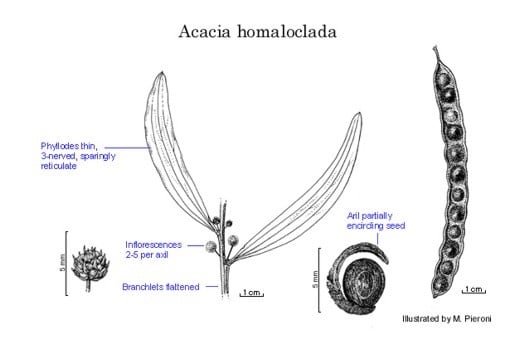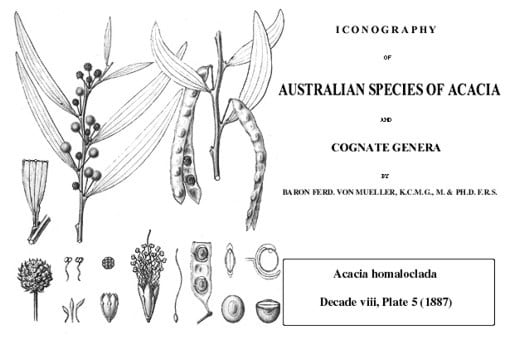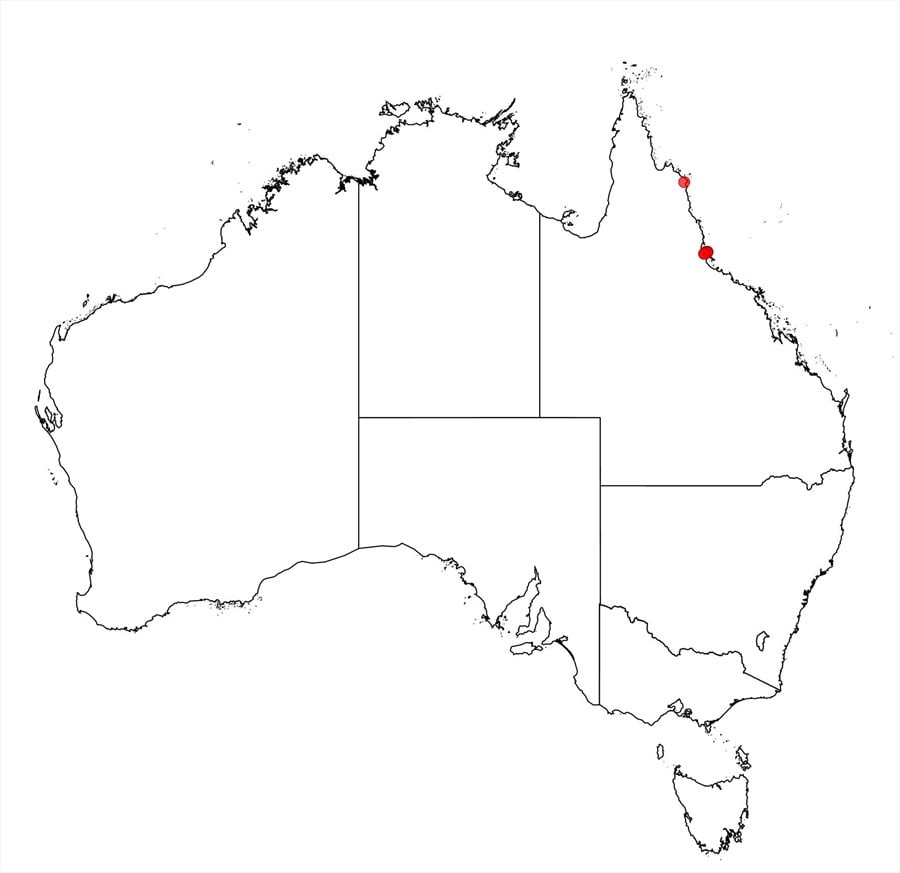Acacia homaloclada F.Muell.
WATTLE
Acacias of Australia
Family
Fabaceae
Distribution
An uncommon species from Hinchinbrook Is. and nearby coastal areas near Ingham, Qld.
Description
Spindly glabrous shrub to 5 m high. New shoots pink. Branchlets flattened towards extremities. Phyllodes lanceolate to narrowly elliptic, 6–10 (–12) cm long, 9–15 (–20) mm wide, acute or obtuse, thin, with 3 prominent, longitudinal main nerves; minor nerves few, inconspicuous and sparingly longitudinally anastomosing; gland prominent, 2–6 mm above base. Inflorescences simple or rudimentary racemes with axes c. 1 mm long, 2–5 per axil; peduncles 8–15 mm long; basal bract persistent; heads globular, 20–30-flowered, golden. Flowers 5-merous; sepals free. Pods flat, alternately rounded over seeds and scarcely constricted between them, to 10 cm long, 8–10 mm wide, coriaceous, pruinose; margins thickened. Seeds longitudinal, subcircular, subflat, 4–5 mm long, dull, black; funicle/aril 1/2–3/4 encircling seed, dark coloured.
Phenology
It appears as though this species flowers around Nov.–Dec.
Habitat
Grows in sandy soil mainly along streams in eucalypt woodland.
Specimens
Qld: 15 km N of Ingham, L.Pedley 2600 (A, BISH, BRI, CANB, K, MEL, MEXU); Zoe Bay, Hinchinbrook Is., J.G.Tracey 15484 (BRI).
Notes
Related to A. complanata which is most readily distinguished by its phyllodes with 7–9 main longitudinal nerves and heads 35–45 (–60)-flowered. Acacia homaloclada has similar phyllodes and flowers to those of A. racospermoides.
FOA Reference
Data derived from Flora of Australia Volumes 11A (2001), 11B (2001) and 12 (1998), products of ABRS, ©Commonwealth of Australia
Author
R.S.Cowan, B.R.Maslin
This identification key and fact sheets are available as a mobile application:
URL: https://apps.lucidcentral.org/wattle/
© Copyright 2018. All rights reserved.








